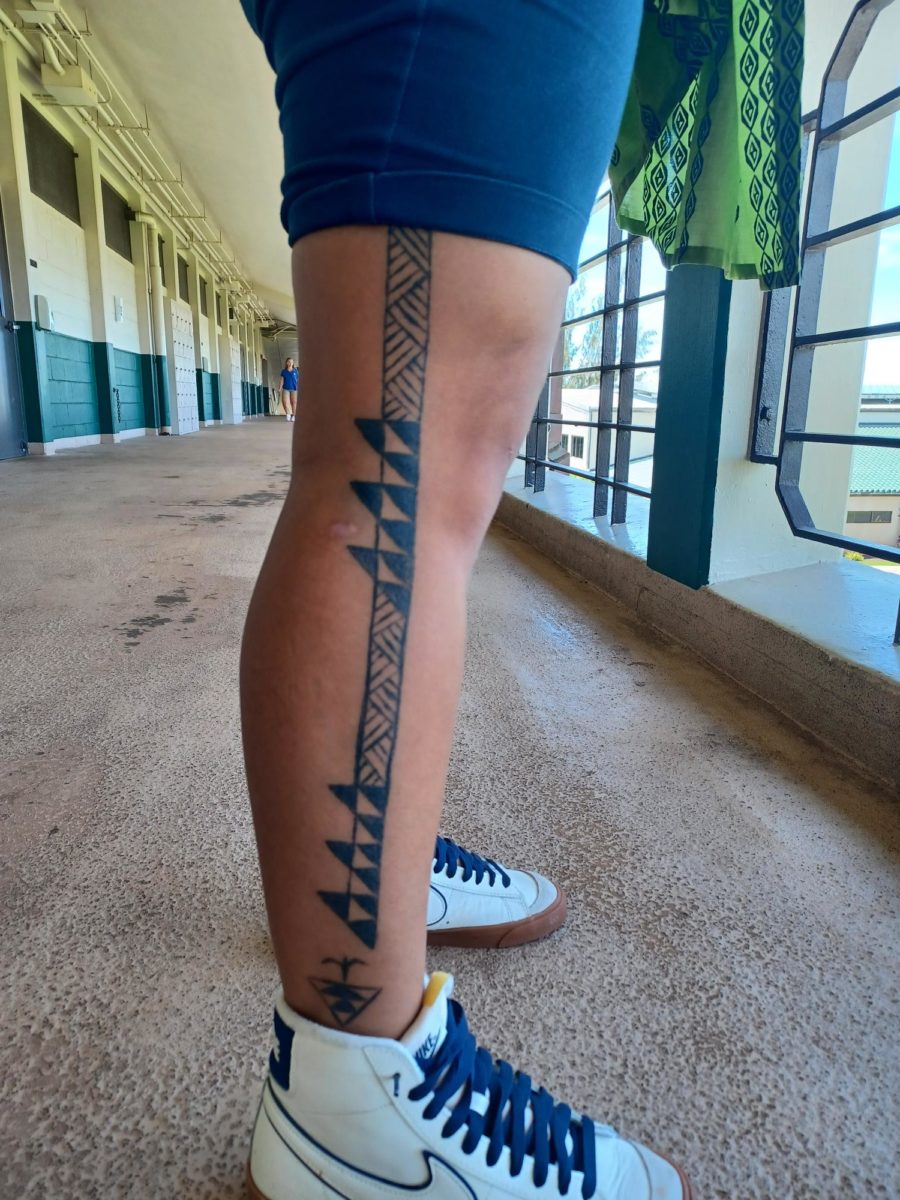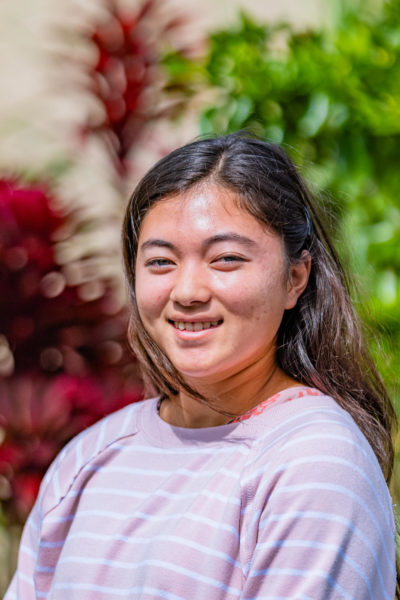Senior Sami-Maimiti K. Anderson speaks out on her experience with traditional Hawaiian tattoos.
The hula dancer explains that an ala maʻi is the unveiling of the wearer’s family history and home; established when a child is first free of the mother’s womb. An ala maʻi is designed and tattooed on the inner leg when the girls start their “first period,” a signal that the girls can have children. In addition, a tattoo artist of “fifteen years,” Jordan Wolfe, owner of Hiwa Tattoo in Waipahu, has said the structures of the Hawaiian tattoos is as follows: the “ala niho is a vertical, linear design that stretches from one’s hip to ankle on the outside of their leg, and an ala ma’i is a vertical, linear design that stretches from one’s genitals to ankle on the inside of their leg.” The term “uhi” is in reference to the mark left behind from the act of kakau.” An ala niho uhi and a second ʻuhi were tattooed on Anderson by Suluʻape Keone Nunes.
The ala niho tells the story of the wearer’s moʻokūauʻhau and wahi, much like the ala maʻi. Men and women can receive it. Anderson’s ala niho took “three hours long” and “Uncle Keone” had made the upperclassman prepare her “genealogy” and converse before crafting the tattoo. The finished product consisted of symbolic images that represented Sami-Maimiti’s dad, grandma and other unique heritage of the Anderson family. Dissimilarly, Anderson’s second uhi had taken multiple postponements before Nunes thought she was “mentally ready” to receive it. Anderson had her tattoo imbedded in her skin on the fourteenth of august this year. In retrospect of Anderson’s desire to attain an uhi since she was a child, she said, “I wanted it because I love my genealogy and to be able to wear it proudly means I have a huge responsibility to make them proud.”
Ultimately, the Ala Maʻi, Ala Niho and Uhi unearth an aspect of Hawaiian culture that students on the Kamehameha-Kāpalama campus portray proudly.



